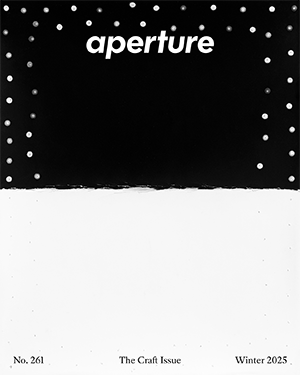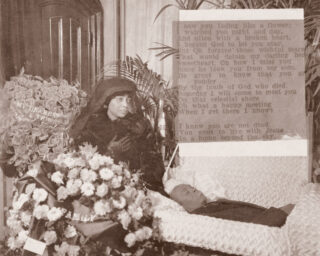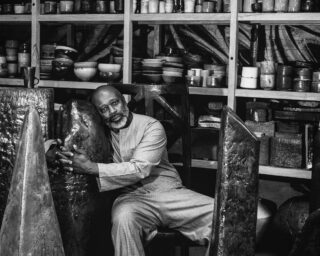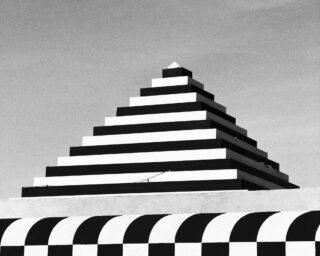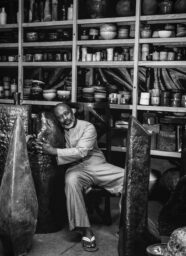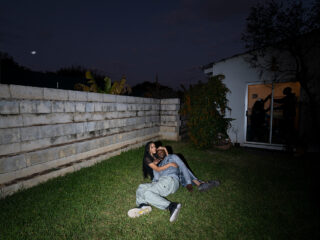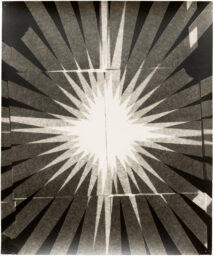Erik Kessels Celebrates the Mistakes of Amateurs
In an excerpt from The Many Lives of Erik Kessels, Simon Baker considers the value of mediocrity.
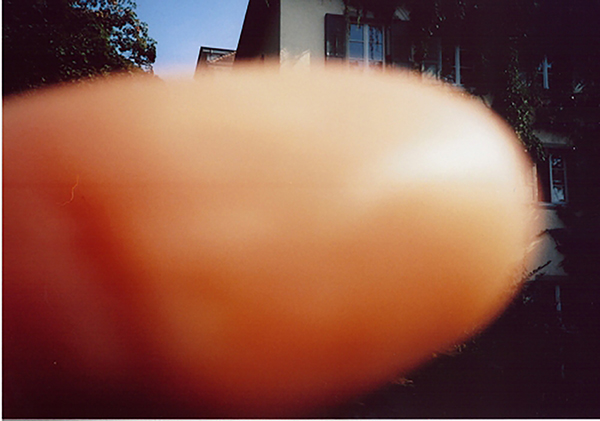
From The Many Lives of Erik Kessels, 2017
Courtesy the artist
I really don’t consider myself an artist. I make art, but it’s a job . . . this is one profession in which I can be a little bit stupid, and people will say, “Oh, you are so stupid, thank you, thank you for being so stupid.” —Maurizio Cattelan
Amateurs . . . never know what they might end up with, and they don’t particularly care. Nor should you. —Erik Kessels
In 2003 the French writer and critic Jean-Yves Jouannais published one of the most important revisionist histories of art to have emerged in the past fifty years. It was called L’idiotie (Idiocy) and true to the form of the kinds of art with which it was concerned, it was mostly ignored and misunderstood. Primarily it was ignored because no one translated it into English, and the Anglophone world is far too lazy and arrogant to take untranslated French books seriously: they, it is assumed, like public safety warnings on Japanese cigarette packets, are clearly not intended for us. But make no mistake, Jouannais’s book is full of important information. It may not save your life, but neither will learning to read warnings about smoking in kanji.
The gist of L’idiotie, to summarize with brutal brevity, is that there is (and has been) a radical third way for art production that has been dangerously misunderstood and underrated. Looking back to the early twentieth century from today’s vantage point, Jouannais makes clear, it is no longer necessary to posit the binary logic of creative genius (Picasso) versus nominalist genius (Duchamp). Rather, it has always been possible, in Jouannais’s opinion, to avoid the pitfalls of predictable (and successful) art by engaging fully in stupidity, loving mediocrity, and flirting with failure: “art did not become modern,” he claims, “until idiocy became its generative principle.” This strategy (or nonstrategy in most cases) also has the added benefit of dealing with, and resisting, the postmodern disappearance of the author into the work: “Idiocy in art,” he says, “itself a voluntary idiocy, revindicated and instrumentalized, constitutes . . . a manner of resisting disappearance.” But that’s enough bad translation of a brilliant book. Don’t be an idiot; find a copy, look at all the pictures, and then find a French person who’ll tell you what the words say . . .

From The Many Lives of Erik Kessels, 2017
Courtesy the artist
Anyone who knows Erik Kessels (or his work) should have bells going off in their heads by now. We all know (or at least suspect) that Kessels is not stupid, but then again, he seems to have the ability to do deeply idiotic things in the pursuit of a kind of hard-core resistant art production (up to and including photographing his own penis and then hiding it in a book of thousands of penis photographs). But as Kessels himself writes in his recent book on failure: “If you’re anything like me, you’re called an idiot at least once a day. And that’s OK. Because making mistakes, flirting with disaster and pure, outright failure is how you will get better. Without it, you’re stuck in a zone of mediocrity.” (Jouannais, incidentally, would probably have a problem with this, as he sees mediocrity itself as containing a rich vein of usually untapped creativity: truly stupid artists, perhaps, should have no need to “get better.”)

From The Many Lives of Erik Kessels, 2017
Courtesy the artist
There is, however, a dumb core of Kessels’s practice. Although there is probably no sense in which he’d ever feel licensed, like Maurizio Cattelan, to be “professionally stupid” as an artist. The wide range of Kessels’s activity, from advertising to art direction, graphic design, curating, collecting, and so on, is insurance against the notion of simply being an artist (or even more simply, a photographer). And even the small-scale photobook world, which Kessels has made his home, sees him as everything along the sliding scale from artist/producer to publisher/collector. The dumb core, then, can be found in Kessels’s ability to bracket out and suspend these categories in such a way that normative notions of production and consumption are interrupted or suspended. And this, at a time when the ubiquity of appropriated content has made it almost completely impossible to tell who the next person to stumble from photographic stamp collector to conceptual artist is likely to be. There are brilliant stars in the Milky Way of found imagery (like Kessels’s friend and occasional collaborator Thomas Mailaender), but they’re horribly outnumbered by orbiting lumps of rock dying to be reclassified as planets.

From The Many Lives of Erik Kessels, 2017
Courtesy the artist
But Kessels was not just (or maybe not even) one of the first to mine the infinitely deep shafts of mediocrity constituted by the photographic albums of ordinary people. He seems always to have had the inexplicably positive attitude of a delusional alchemist: certain than he will succeed, where all others before him have failed, in turning giant piles of unremarkable dross into pure gold. In and of themselves, the photographs from which much of his work is assembled are unutterably dull, miserably inadequate, obstinately occupying the space reserved for things diametrically opposed to art. But the apparently impoverished nature of this material is magically reversed by the relentless optimism of Kessels’s dumb humor. Because he is determined not to care about individual images at the level of meaning or value, they become transcendent symbols of potential mobility and the mystical power of failure and stupidity to reverse value systems. This was particularly evident in the works selected for the exhibition and book Failed It! (2016), where Kessels shifts deftly from finding strange pictures that make us think or make us laugh, to finding other people who have already done the dumb legwork for him. Everywhere in Kessels’s work the normative logic of production is replaced by something better: something that refuses to obey the various indices of value that artworks love to be measured by. These include (but are not limited to) originality, uniqueness, expense, size, intention, formal organization, aesthetic sophistication, and even beauty.
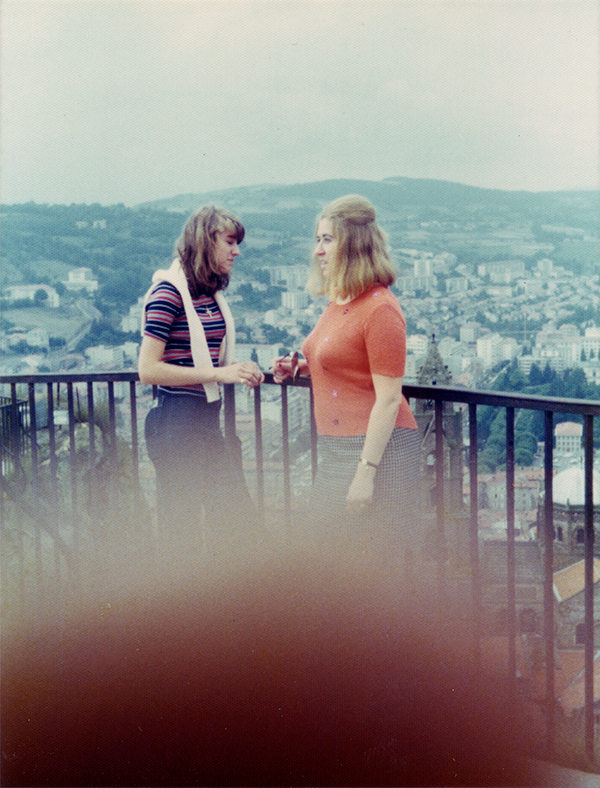
From The Many Lives of Erik Kessels, 2017
Courtesy the artist
We could leave Kessels here, staring at us like a lost puppy from the other side of the border between art and rubbish. But Kessels, one suspects, would never abandon a lost puppy (even one that mysteriously failed to register on photographic film), just as he would never suffer the life of an image to be prematurely cut short. Among his most recent work, Unfinished Father (2015) stands out, both for its raw emotional content and Kessels’s evident need to take the real world seriously. Confronted by the long-term illness of his father following a stroke, Kessels constructed the installation Unfinished Father from parts of the vintage car his father was working on before his illness, including the photographs made in the restoration process. But even here, in the man-cave of emotional failure, Kessels makes a virtue of losing the plot: “we can attempt to control our circumstances,” he writes, in the book of the project, “but in the final analysis they control us.” Having proven, time and again, that unleashing the tsunami-like flow of global image culture is an unpredictable and risky business, Kessels finds not only that it’s beyond his control, but that it has flooded his basement.
This essay was originally published by Aperture in The Many Lives of Erik Kessels (2017).
Simon Baker is Senior Curator, International Art (Photography), Tate Modern, London.
